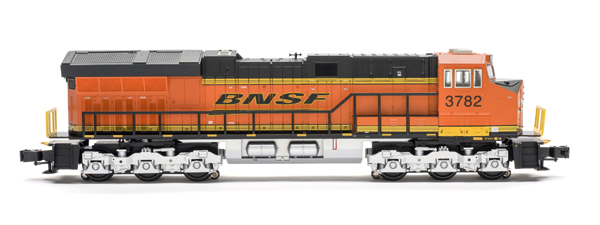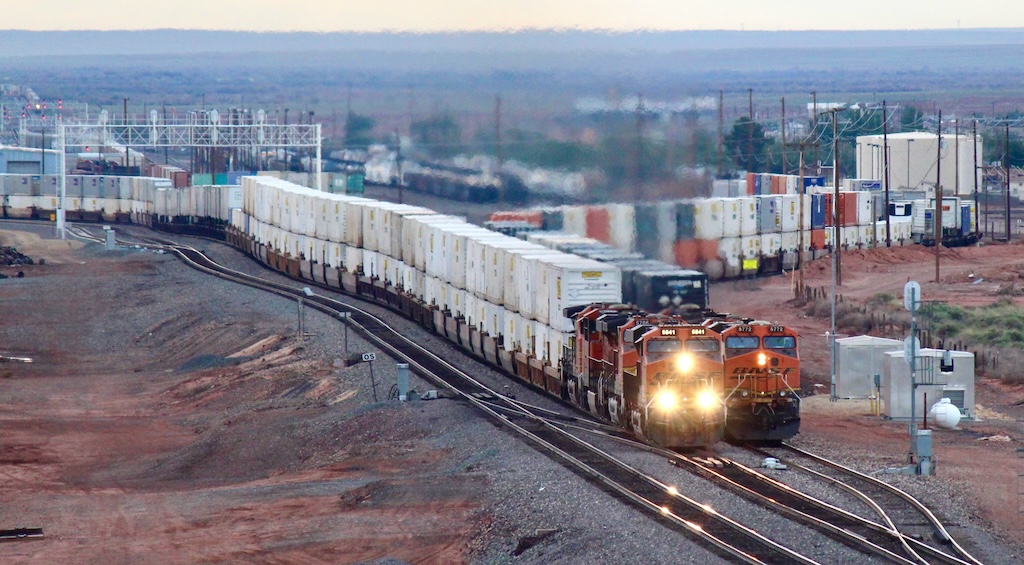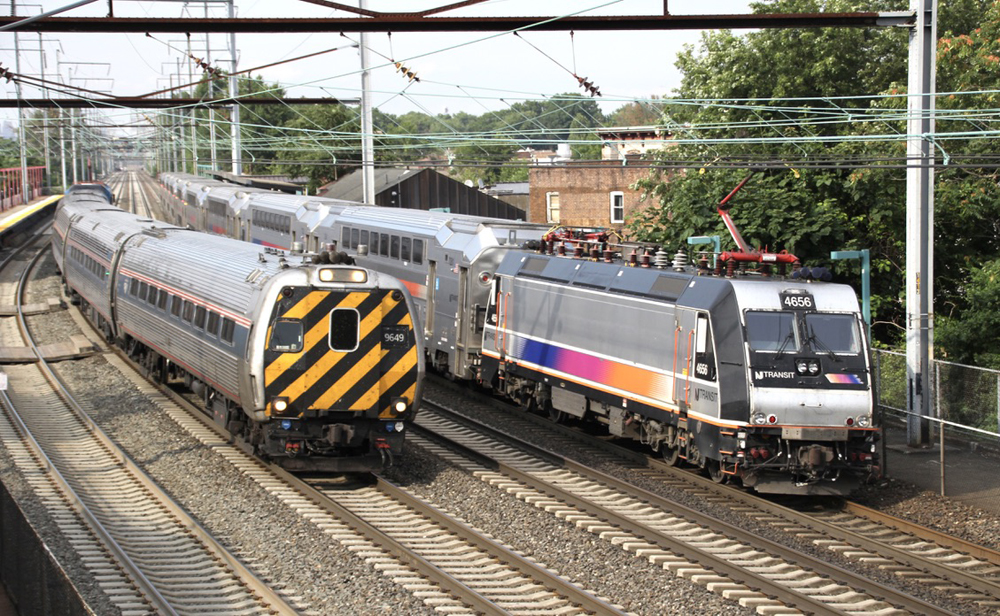O gauge ET44C4 starter set locomotive from Lionel
Price: $399.99 for no. 84732 set, separate-sale locomotive approximately $220 Features: O-36 operation, two motors, operating couplers, Lionel RailSounds RC sound system, illuminated cab and directional headlights, handheld remote controller. Low speed (app): 11.8 scale mph Low speed (universal remote): 16.25 mph, High speed: 56.2mph Drawbar pull: 10 ounces Current-production road name: BNSF
I was at Sommerfeld’s Trains in Butler, Wis., and asked shop owner Jack Sommerfeld what merchandise that had come in recently he thought was neat and exciting. Jack pointed out Lionel’s no. 84732 BNSF Tier Four LionChief set.
What caught my eye was that the set was led by a General Electric ET44C4 diesel. Where many starter sets have a steam engine or a cab unit from the 1960s on point, this one had a contemporary road diesel. I thought that was great – giving kids a set with models of what they might see at a grade crossing.
Jack graciously agreed to let me borrow the O gauge locomotive for a few days of testing for a review. I was pleasantly surprised with the results.
What the heck is an ET44C4? The model number stands for Evolution Series Tier 4 4,400 horsepower. The ET44C4 originated with GE Transportation (now Wabtec). It is a locomotive meeting Tier 4 environmental standards that has been popular with North American railroads. The BNSF alone has 275 ET44C4s operating through its system.
Out of the box
This is part of the Lionel no. 84732 BNSF Tier Four LionChief set. The set contains the locomotive, and three BNSF freight cars: a Uni-Body tank car, a Hi-Cube boxcar, and an intermodal car with two containers. Also included are 12 sections of track, a 54W wall pack power supply, and a LionChief handheld remote controller.
Please be aware that I tested only the locomotive rather than the entire set. You should be able to find the GE diesel with the rest of the set or sold individually through dealers who break up sets and sell components.
Hats off to Lionel for introducing this GE locomotive. The model is made from new tooling that captures the look of the prototype diesel. Remembering that the target audience is beginners and the traditional-sized train market, this is an attractive addition to a new fleet.
The model has a fair size. The frame is 15¼ inches long, while the coupler-to-coupler length is 16½ inches long. The frame is stamped steel, and the handrails are folded portions of the frame. This means they are darned near unbreakable – and you can carry the engine with one finger if you want to. The side handrails are black, while the handrails on the pilot are yellow. The pilot is basic, with steps and a yellow safety stripe above the couplers.
The safety cab looks good, with front corners angled downward. There are cast-in detail points representing grab irons and sand filler caps. The face has cast-in grab irons running up. A cast-in access door to the left of the headlight.
The cab has two front windows, and there are three on each side of the cab. There are also windows on the rear of the cab. Up top are number boards illuminated by the cab bulb.
The cab roof has antennas and HVAC equipment painted white. Behind the cab, the roof has rivet and seam detail for three narrow panels and one large panel
Each panel has two cast-in lift-rings. Behind them is a lower section with eight small panels with hinge detail, a flat walkway with safety tread, and what might be the smallest horn available in O gauge!
Next is a taller section with four cast-in lift rings and an exhaust sack. Though you can peer into the stack, there is no smoke unit.
Next is the most distinctive feature of the body: the radiator wings. You’ll find cast-in screen detail as well as some lift rings on the walkway and each wing top.
The sides emulate the GE prototype very well, with deeply cast screen and vertical louver detailing. The model’s many access doors are easily identifiable as well. The rear has additional screen detail and cast-in grab irons and a sand filler cap. The engine number is painted on the overhang, and there are rear lamps for directional lighting.
The six-wheel trucks look great with their simulated spring and brake detailing. The trucks and fuel tank are painted silver.
The print and decoration of the locomotive may be the mot complex I’ve seen on a starter set locomotive, except perhaps for the Santa Fe warbonnet. From the bottom the paint is black; next you have a yellow stripe with two thin black stripes dividing it. Then the scheme runs black, orange, and a repeat of the yellow and black striping. The upper part of the body is all black.
The number of assorted nomenclature tags, like safety warnings, surprised me. There were 12 on the side, not counting the builder’s plate and the engine type (ET44C4) applied to the frame.
On the test track
Per the instruction manual, the locomotive is not designed to respond to transformer controls (horn/bell), even though it can be powered at 18 volts by a conventional transformer. Operation and features are controlled through the handheld remote or the Lionel app.
Some of the features you can control are the obvious forward/reverse/horn/bell as well as triggering the RailSounds RC sound system with assorted prime mover sounds, background noise, horn, bell, and special announcements that can be played at will. Parents or grandparents will like the fact that there is an on/off switch for the sound system on the underside of the locomotive.
Since we didn’t test the starter set and the wall power supply, we opted to use an MTH no. Z-4000 transformer for providing 18 volts of power for the locomotive.
Operation was smooth and quiet, and the locomotive was responsive to commands from the remote or the app. The engine sounds were good yet basic. I was surprised that it revved according to the model’s speed. Heck, 20 years ago having a sound system like this starter set engine has would have been crazy talk. The bell and horn were both loud and clear.
I did the low-speed testing with both the handheld unit and the app and found an interesting, though not particularly meaningful, difference. Our app low-speed average was 11.8 scale mph while the handheld remote’s was 16.25 smph. High speed came in at 56.2 scale mph. That was limited primarily by the short straight run of our test track.
Drawbar pull came in at 10 ounces. I hooked up 10 freight cars on hand, and the diesel pulled them with ease.
Operating this engine was a pleasing surprise. Often the locomotive paired with a starter set is basic, and has a short lifespan before something better is acquired.
This GE ET44C4 is a budget locomotive that has good performance numbers and a paint job worthy of a higher-end product. I’d like to thank Sommerfeld’s Trains for letting me test this gem.














